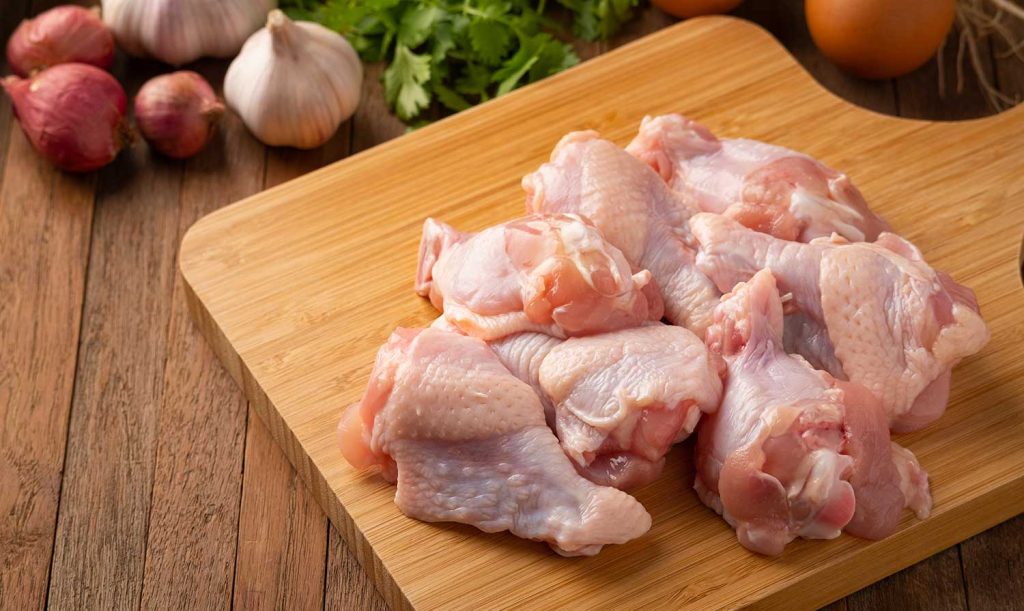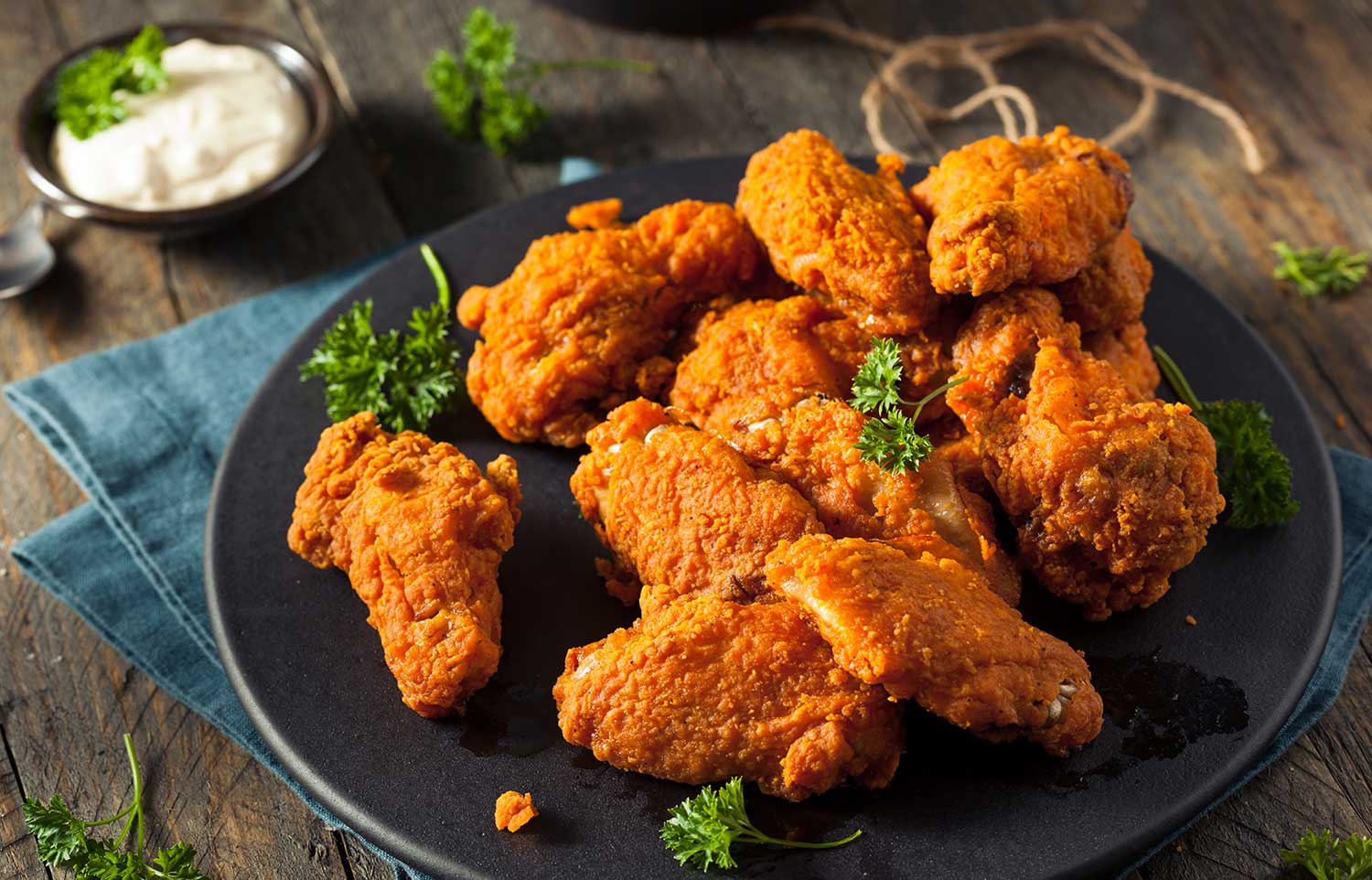Crispy fried chicken wings are an absolute favorite at sporting events and gatherings. I’ve been a big fan of sports and wings. There is something about them that really hits the spot. They provide a substantial amount of protein that seems to fill a void at many carb-laden gatherings. First, there is that pleasing, crispy, crunchy texture, followed by the juicy, meaty, satisfying mouthful. What’s not to like?
Frying chicken wings is easy, albeit a bit of a messy chore for larger groups, but the results are more than worth the effort. This recipe calls for brining the chicken wings the night before. If you’re in a hurry or doing this at the last minute, you can skip this step. The result will still be crunchy wings, but they will be less flavorful and less juicy. The brine does make a big difference and is well worth the effort.
One of the keys to a good fry is controlling the oil temperature. The easiest method to maintain oil temperature is by using an electric fryer. Here is a reasonably priced Hamilton Beach Electric Deep Fryer with 2 Baskets that I’ve used before for parties. If you don’t have an electric fryer, you will absolutely need a thermometer to monitor the oil’s temperature. Without an electric deep fryer, maintaining the optimal oil temperature of 350°F (177°C) will be your top priority.
Here is the best way to handle this chore if you don’t have an electric fryer. Once you are ready to fry your first batch, bring the oil up to 355°F (180°C). I like going a bit past the target temperature because once you place the chicken in the hot oil, the temperature will drop immediately. Simultaneously, I raise the heat one notch to compensate for the coming temperature drop.
Be mindful that there is a time lag between any heat adjustments and the oil responding. The optimal cooking temperature range is 325°F-350°F (163°C-177 °C). If you allow the oil to drop below 325°F (163°C), you’re in danger of producing a soggy, oily chicken wing. Maintaining a higher temperature will ensure your chicken is crunchy, juicy, and not oily. This is true anytime you fry chicken – whether it’s wings or otherwise.

Ingredients:
- 5 lbs. chicken wings (separate the drumsticks from the flats)
Brine:
- 4 cups whole milk
- 1/4 cup kosher salt
- 6 cloves garlic, minced or pressed
- 3 tbsp black pepper, freshly ground
- 3 bay leaves
Dredge and Batter:
- 4 cups all-purpose flour
- 1 cup cornstarch
- 1 tbsp baking powder
- 1 tbsp kosher salt
- 1 tbsp black pepper
- 1/2 tbsp white pepper
- 1 tbsp garlic powder
- 2 tbsp smoked paprika
- 2 tsp cayenne pepper (to taste)
Instructions:
- In a mixing bowl, combine milk, salt, pepper, garlic, and bay leaves. Cut small slits into the thick part of each chicken wing to allow the brine to infuse and tenderize the meat. Brine the chicken overnight for the best results.
- In a separate bowl, combine the dry ingredients for the dredge and batter – flour, cornstarch, baking powder, salt, black pepper, white pepper, garlic powder, paprika, and cayenne pepper.
- In another bowl, remove 2 cups of the dry ingredient mixture and combine with 1-2 cups of water to make the wet batter.
- For each frying batch of approximately 6-8 pieces (depending on the size of your fryer), remove the chicken from the brine and pat dry. Dredge each piece in the dry mixture, then dip it into the wet batter. The chicken should be coated entirely, but shake off as much excess batter as possible.
- Immediately, place the chicken into the 350°F (177°C) oil. Fry for 8-10 minutes. When done, place the wings on a wire rack to drain excess oil (don’t use paper towels) and allow to cool for at least 10 minutes.
Bonus: He’s my not-so-secret buffalo chicken wing sauce. For a medium sauce, combine 1 cup of Frank’s Red Hot Sauce (Original) with 4 tablespoons of butter in a saucepan. Warm and mix until butter is melted and well combined. For a milder sauce, increase the amount of butter. For a hotter sauce, decrease the butter and add cayenne pepper.
Enjoy!

